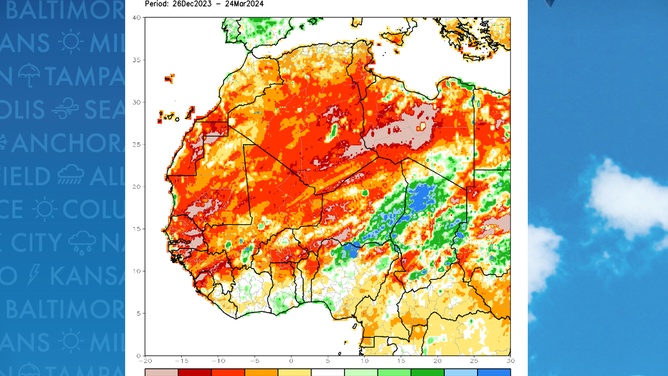Chocolate prices soar as exporters impacted by extreme weather
In 2023, West Africa experienced heavy rainfall that devastated cocoa fields. The reversal happened in 2024 with the presence of drought, courtesy of an El Nino. According to climate experts, these weather extremes have helped the price of cacao beans to triple since March 2020.
Hot chocolate: the 5,000-year history of winter's favorite beverage
From the tropical cocoa tree to your favorite winter mug, the journey of hot chocolate spans 5,000 years and multiple continents.
ABIDJAN, Ivory Coast – Extreme weather around the globe means consumers are having to pay more for the main ingredient in many sweet confectioneries – cocoa.
A report by the Energy & Climate Intelligence Unit, a non-profit organization based in the United Kingdom, said that varying extreme weather conditions have caused production levels to plummet, triggering a spike in costs.
The countries of Ivory Coast and Ghana in western Africa produce around 60% of the world’s cacao, while 99% of the crop is said to originate in countries that are vulnerable to climate change.
According to the group, West Africa experienced flooding rains in 2023, which triggered diseases and has been followed by arid conditions, which are typical of an El Niño.
"Farmers in West Africa who grow the main ingredient, cocoa beans, of the Easter eggs many of us are looking forward to are struggling in the face of both extreme heat and extremes in rainfall," Amber Sawyer, an analyst at the Energy and Climate Intelligence Unit, stated.

Estimated rainfall in West Africa.
(NOAA)
WHAT SEASON DO FRUITS AND VEGETABLES GROW IN?
Cacao trees are limited to growing in areas that have warm temperatures, abundant rainfall and high humidity.
These tend to be in regions where rainforests exist, within about 10 degrees of the equator.
This prohibits large parts of the globe from growing the important commodity, including in the U.S.
According to the International Institute for Sustainable Development, more than 4 million tonnes (about 4.4 million tons) of cocoa beans, the processed form of cacaos, are produced annually in the equatorial region.
Bittersweet chocolate tends to have a higher percentage of cacao than semisweet or even milk chocolate.
Halloween, the winter holidays and Easter are typically the dates with the highest consumption of chocolates.
HAITI CRISIS PLUNGES COUNTRY INTO EXTREME VULNERABILITY TO NATURAL DISASTERS
The repercussions of the poor growing conditions have reverberated throughout global markets.
The price of cocoa beans is reportedly more than three times the cost in March 2020, with prices hovering around a record $10,000 per tonne (per 1.1 ton).
Cocoa beans are not the only product impacted by record extremes. The ECIU said rice from Asia, tea from Kenya and fruits from South Africa and South America have all seen price increases due to the weather.
An expected transition out of an El Niño into a neutral status will likely result in a change in weather patterns, but extremes are still likely no matter the status of the El Niño-Southern Oscillation, or what is commonly called the ENSO.
"El Niño years often lead to challenges for farmers through changing patterns of weather," Ben Clarke, a research assistant at the UK’s Imperial College, said in a statement. "Increasingly, climate change, driven by fossil fuel use, is multiplying this natural challenge in many regions. It fuels more extreme conditions, devastates harvests, and makes food costs higher for all."
